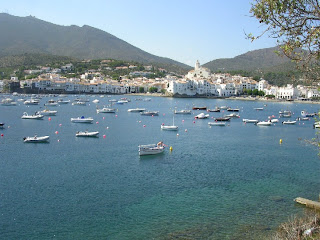

September 21st
We had planned to explore the Collscabra (mountain pass of the goat) region of Catalunya, and visit a huge medieval mansion called L’Avenc, that Matthew Parris, the Times Columnist had restored with his family over a 6 year period, and featured in his book “A Castle in Spain”. We had also planned to explore the volcanic region around Olot on the way.
However, the best laid plans …….Olot was uninspiring, the campsite there was closed, and the volcanoes appeared to be just heavily wooded hills, so Plan B, we headed for Rupit near L’Avenc 1000 metres up in the Collscabra, where there was a campsite. However, this was just a weekend site and was in the process of closing Sunday afternoon when we arrived.
On to Plan C ~ we drove on to Tavertet, only 9 Km from Rupit by track, but about 20 Km along a narrow windy mountain road, with spectacular views over the river Ter, and walked around Tavertet. L’Avenc was about 4 Km along a mountain track which we were’nt sure the van would make it. As we had nowhere to camp, we abandoned our plan to visit and headed down to the valley to the town of Vic, where there was a campsite luckily open.




















































